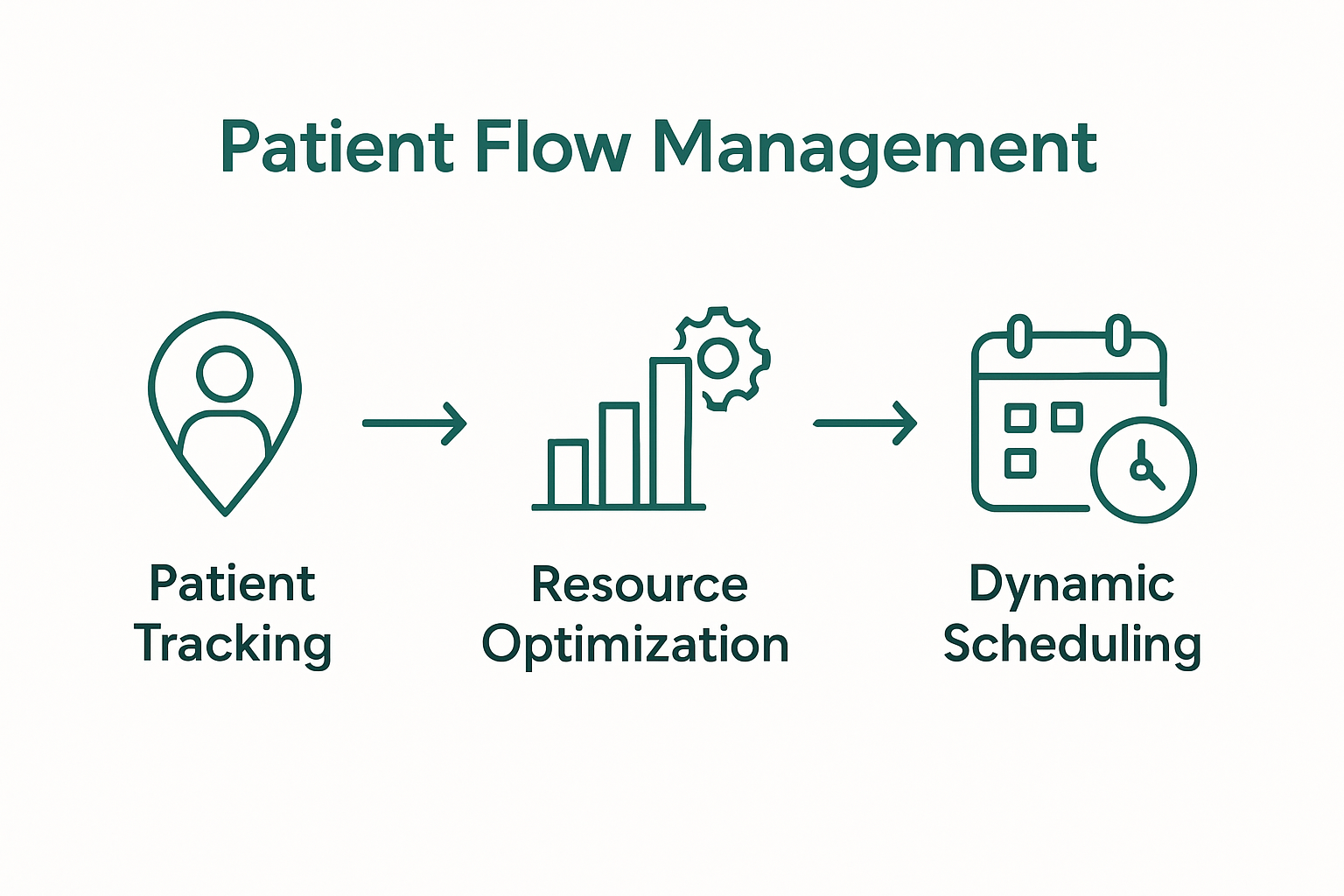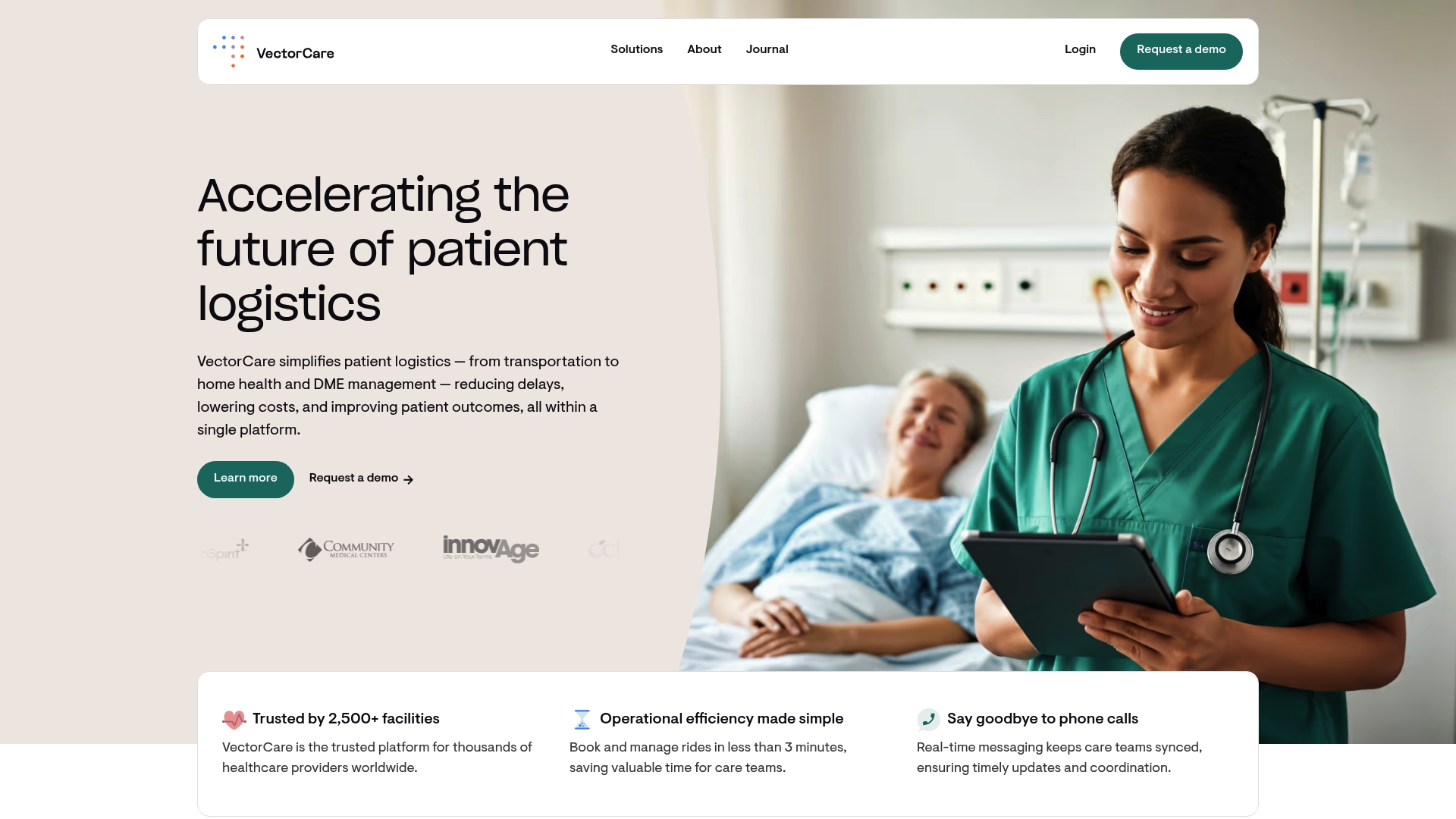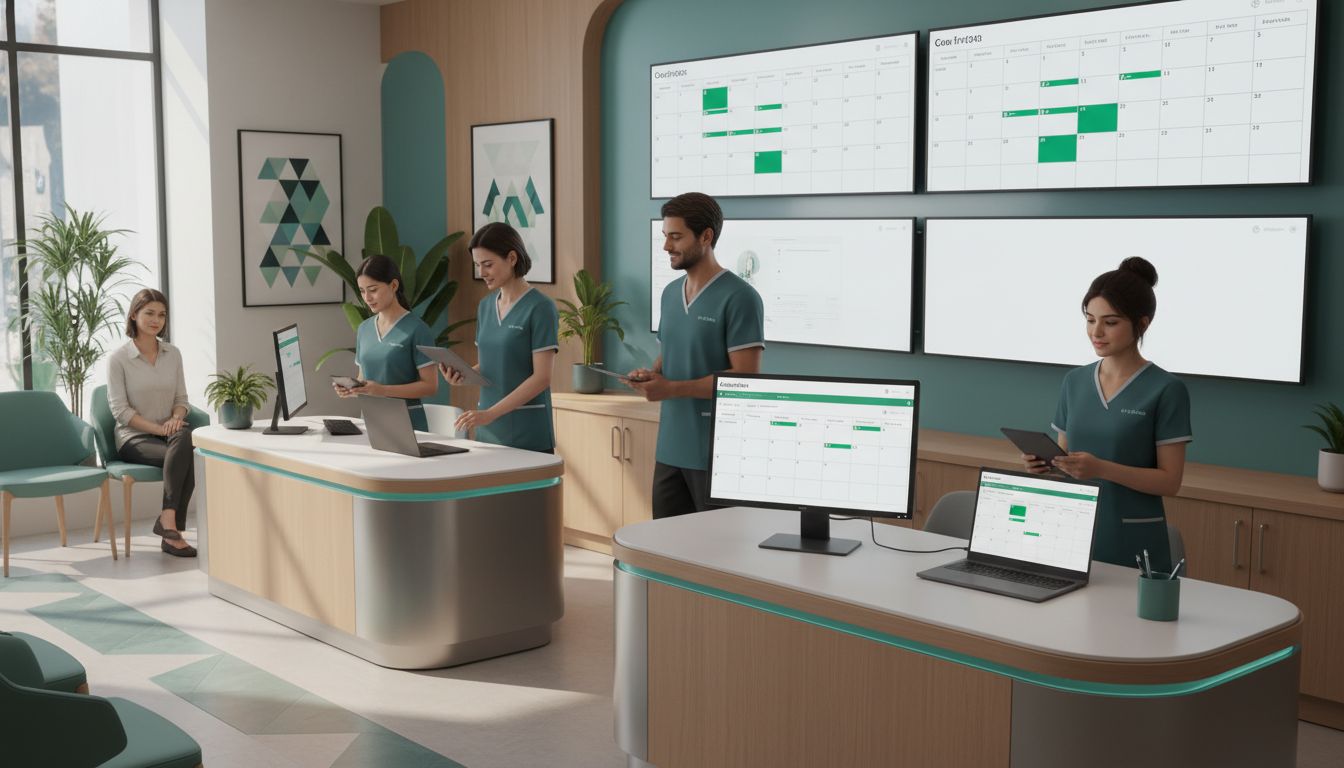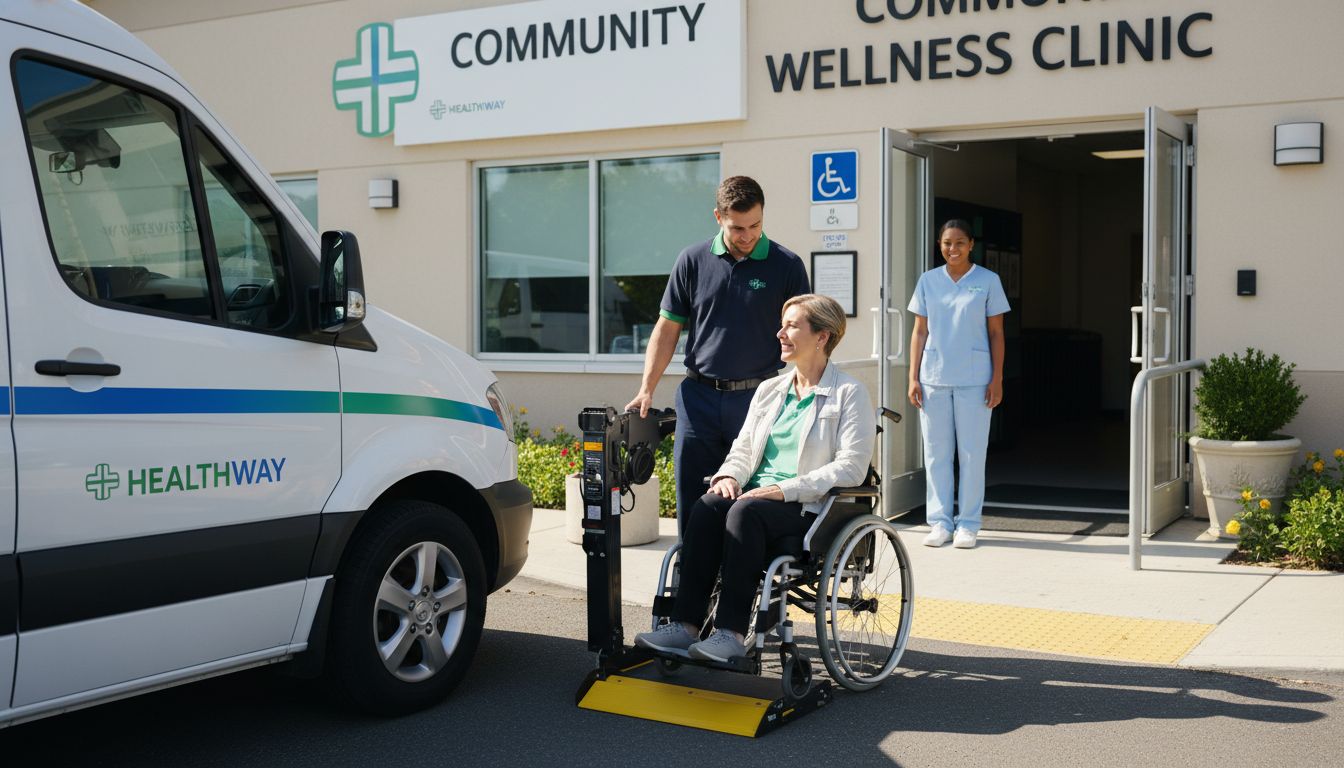What Is Patient Flow Management? Guide for Healthcare 2025

Hospitals everywhere are scrambling to move patients efficiently and avoid costly delays. Yet, new data shows that advanced patient flow systems can cut total service costs by 14 percent or more. That sounds impressive, right? Here is the twist. The biggest gains come not just from saving money, but from transforming how care teams work together every moment of the day.
Table of Contents
- Defining Patient Flow Management In Healthcare
- Why Patient Flow Matters Across Care Settings
- Key Challenges And Best Practices For 2025
- Technologies And Solutions Shaping Patient Flow
Quick Summary
| Takeaway | Explanation |
|---|---|
| Effective Patient Flow Management Enhances Efficiency | Implementing patient flow management strategies optimizes operational performance, reduces wait times, and improves patient satisfaction across healthcare settings. |
| Technology is Key to Transforming Patient Flow | Advanced technologies, including AI and real-time analytics, revolutionize patient flow by enabling predictive insights, improving resource allocation, and enhancing care coordination. |
| Addressing Bottlenecks is Crucial for Success | Identifying and addressing critical patient flow bottlenecks, such as communication gaps and inefficient resource allocation, is essential to improve overall healthcare delivery. |
| Holistic Integration of Systems is Essential | Integrating technological solutions into a holistic framework enhances visibility and adaptability, dramatically improving patient flow management across diverse medical environments. |
| Continuous Adaptation and Improvement are Required | Healthcare organizations must continually adapt and refine their patient flow management strategies to meet evolving demands and achieve operational excellence. |
Defining Patient Flow Management in Healthcare
Patient flow management represents a critical strategic approach in modern healthcare, fundamentally transforming how medical facilities optimize patient movement, resource allocation, and care delivery. At its core, patient flow management is a comprehensive system designed to enhance operational efficiency, reduce wait times, and improve overall patient experience across healthcare settings.
The Comprehensive Framework of Patient Flow Management
Patient flow management goes beyond simple logistics, representing a sophisticated approach to coordinating complex healthcare processes. Research from the National Institutes of Health defines it as the application of holistic perspectives and dynamic data management to enable timely, efficient, and high-quality patient care. This approach involves intricate coordination across multiple departments, integrating technological solutions, human expertise, and strategic resource allocation.
The framework encompasses several critical components: continuous patient tracking, real-time resource optimization, dynamic scheduling, and intelligent routing of patients through various healthcare touchpoints. Healthcare organizations implementing robust patient flow management systems can significantly improve operational performance, reducing bottlenecks and minimizing unnecessary delays in treatment.

Key Objectives and Strategic Implications
Effective patient flow management pursues multiple interconnected objectives. Clinical research publications highlight that the primary goals include:
- Resource Optimization: Balancing department capabilities and patient needs to maximize healthcare delivery efficiency
- Patient Safety: Ensuring continuous monitoring and appropriate care progression
- Operational Efficiency: Reducing administrative overhead and streamlining care delivery processes
- Cost Management: Minimizing unnecessary expenditures and improving financial performance
The strategic implications of patient flow management extend far beyond immediate operational improvements. By creating a more responsive and adaptive healthcare environment, organizations can dramatically enhance patient satisfaction, reduce staff burnout, and create more predictable and manageable care delivery systems.
Modern patient flow management integrates advanced technologies such as artificial intelligence, machine learning, and real-time analytics to provide unprecedented visibility into complex healthcare ecosystems. These technological interventions enable healthcare providers to make data-driven decisions, anticipate potential bottlenecks, and proactively address challenges before they impact patient care.
Ultimately, patient flow management represents a holistic approach to healthcare delivery, transforming traditional reactive models into dynamic, intelligent systems that prioritize patient needs while maintaining operational excellence. As healthcare continues to evolve, organizations that master these sophisticated management strategies will be best positioned to deliver superior patient experiences and maintain competitive advantage in an increasingly complex medical landscape.
To help readers quickly grasp the main objectives of patient flow management discussed above, here’s a summary table of these key goals and their strategic impact:
| Objective | Description |
|---|---|
| Resource Optimization | Balancing department capabilities and patient needs for efficient delivery |
| Patient Safety | Ensuring constant monitoring and appropriate care progression |
| Operational Efficiency | Reducing administrative overhead and streamlining processes |
| Cost Management | Minimizing unnecessary expenditures and improving financial performance |
| Patient Satisfaction | Enhancing patient experiences across the care continuum |
| Staff Well-Being | Reducing burnout through improved workload distribution |
Why Patient Flow Matters Across Care Settings
Patient flow represents a critical mechanism that connects various healthcare environments, ensuring seamless care delivery and operational efficiency across diverse medical settings. From emergency departments to ambulatory clinics, outpatient facilities to long-term care centers, effective patient flow management serves as the fundamental infrastructure supporting quality healthcare experiences.
Impact on Operational Performance and Patient Experience
Research published in healthcare management journals demonstrates the profound significance of optimized patient flow. In ambulatory settings, strategic technology-facilitated communication and space redesign interventions led to remarkable improvements in patient experience scores, increasing from 82.1 to 88.9 (P < .001). This quantitative evidence underscores how thoughtful patient flow management directly translates into enhanced patient satisfaction and institutional performance.
Healthcare organizations face complex challenges in managing patient movement efficiently. Bottlenecks, unexpected delays, and inefficient resource allocation can significantly disrupt care delivery. Case management strategies documented in clinical research highlight how streamlined patient flow mechanisms improve healthcare outcomes while simultaneously reducing operational costs by facilitating timely and efficient patient transitions across different hospital departments.
Technology-Driven Patient Flow Transformation

Advanced technological solutions are revolutionizing patient flow management across various care settings. Artificial intelligence-based tools now enable healthcare providers to predict patient admissions, movement patterns, and discharge timelines with unprecedented accuracy. These predictive capabilities support volume forecasting and enhance care coordination, allowing medical institutions to proactively manage resources and optimize patient experiences.
The transformative potential of intelligent patient flow management extends beyond immediate operational improvements. By integrating real-time data analytics, machine learning algorithms, and interconnected communication systems, healthcare providers can create more responsive, adaptive care environments. These technological interventions help mitigate risks associated with patient waiting times, reduce administrative burdens, and create more personalized care pathways.
Key advantages of comprehensive patient flow management include:
- Reduced Wait Times: Minimizing delays and optimizing resource allocation
- Enhanced Patient Safety: Ensuring continuous monitoring and appropriate care progression
- Improved Resource Utilization: Strategically deploying medical staff and infrastructure
- Cost Efficiency: Reducing unnecessary expenditures through intelligent routing
As healthcare continues to evolve, patient flow management will become increasingly crucial in delivering high-quality, patient-centered care. Organizations that invest in sophisticated flow management strategies and embrace technological innovations will be best positioned to meet growing patient expectations, maintain operational excellence, and drive meaningful improvements in healthcare delivery across diverse settings.
Key Challenges and Best Practices for 2025
Healthcare organizations are confronting increasingly complex patient flow challenges that demand innovative solutions and strategic approaches. As we move into 2025, the landscape of patient management requires comprehensive strategies that address emerging operational obstacles while leveraging advanced technological capabilities.
Identifying Critical Patient Flow Bottlenecks
Healthcare management research reveals several persistent challenges that impede efficient patient flow. Key bottlenecks include communication gaps among healthcare workers, overreliance on manual paperwork processes, unpredictable patient flow patterns, low patient engagement, and inefficient staff allocation. These issues create cascading problems that compromise both operational efficiency and patient experience.
Emergency departments represent a critical focal point for patient flow challenges. Research from healthcare executive forums indicates that overcrowding continues to strain hospital systems, leading to increased operational costs, staff burnout, and potentially compromised patient outcomes. Organizations must develop multifaceted strategies that address these complex interconnected challenges.
The following table summarizes typical patient flow bottlenecks highlighted above and their negative impacts on healthcare operations:
| Bottleneck | Description | Potential Impact |
|---|---|---|
| Communication Gaps | Inadequate information sharing among staff | Delays, errors, reduced care quality |
| Manual Paperwork Processes | Reliance on non-digital paper forms | Slow processing, lost information |
| Unpredictable Patient Flow Patterns | Fluctuations and lack of forecasting tools | Resource misallocation, bottlenecks |
| Low Patient Engagement | Limited patient interaction with care systems | Missed appointments, disruptions |
| Inefficient Staff Allocation | Poor alignment of staff resources with current needs | Staff overload, burnout, longer waits |
| Overcrowding in Emergency Departments | Excess patient volume exceeding capacity | Increased costs, reduced care outcomes |
Advanced Technological Interventions
Technological solutions are emerging as powerful tools for transforming patient flow management. Advanced scheduling systems now enable dynamic appointment adjustments based on real-time data, including procedure lengths and patient cancellation patterns. These intelligent systems optimize resource allocation and significantly reduce waiting times.
Key technological best practices for 2025 include:
- Real-Time Analytics: Implementing AI-driven predictive modeling to forecast patient volume and resource needs
- Integrated Communication Platforms: Creating seamless information exchange across departments
- Dynamic Resource Allocation: Developing flexible staffing models that respond to real-time patient flow demands
- Patient Engagement Technologies: Utilizing mobile applications and digital platforms to improve patient communication and self-service capabilities
Healthcare organizations must also focus on developing robust data infrastructure that supports comprehensive patient flow management. This involves creating interoperable systems that can collect, analyze, and respond to complex patient movement patterns in real-time.
The most successful approaches will combine technological innovation with human-centered design. This means developing solutions that not only optimize operational efficiency but also enhance patient experience and support healthcare worker well-being. Organizations must view patient flow management as a holistic ecosystem that requires continuous adaptation and improvement.
As healthcare continues to evolve, the ability to effectively manage patient flow will become a critical competitive advantage. Those institutions that can develop agile, technology-enabled patient flow strategies will be best positioned to deliver high-quality care, manage operational costs, and meet the increasingly complex demands of modern healthcare delivery.
Technologies and Solutions Shaping Patient Flow
The digital transformation of healthcare is dramatically reshaping patient flow management through innovative technological solutions that promise unprecedented levels of efficiency, accuracy, and patient-centered care. As healthcare systems become increasingly complex, cutting-edge technologies are emerging as critical tools for optimizing patient movement and resource allocation.
Artificial Intelligence and Predictive Analytics
Research from health informatics studies demonstrates the transformative potential of artificial intelligence in patient flow management. AI-powered tools now enable healthcare providers to accurately forecast patient admissions, track movement patterns, and predict discharge timelines with remarkable precision. These intelligent systems go beyond traditional tracking mechanisms, providing real-time insights that allow healthcare organizations to proactively manage resources and anticipate potential bottlenecks.
A systematic review of health information systems revealed that advanced technologies significantly improve patient flow by identifying operational inefficiencies, streamlining care processes, and enhancing coordination across diverse healthcare settings. The integration of machine learning algorithms enables dynamic resource allocation, transforming how healthcare facilities approach patient management.
Economic and Operational Impact of Advanced Solutions
Implementing intelligent patient flow management technologies delivers tangible economic benefits. Clinical research documented a remarkable 14% reduction in total service costs per patient following the deployment of sophisticated patient flow management systems in primary healthcare centers. This quantitative evidence underscores the substantial financial advantages of embracing technological innovations.
Key technological solutions revolutionizing patient flow include:
- Real-Time Tracking Systems: Providing continuous visibility into patient locations and movement
- Predictive Scheduling Platforms: Dynamically adjusting appointments and resource allocation
- Integrated Communication Networks: Enabling seamless information exchange across departments
- AI-Powered Triage Tools: Optimizing patient routing and prioritization
The most advanced patient flow technologies now incorporate multiple integrated solutions, creating comprehensive ecosystems that address complex healthcare challenges. These systems leverage data from electronic health records, real-time monitoring devices, and predictive analytics to create intelligent, responsive patient management frameworks.
Healthcare organizations must view technology not merely as a tool but as a strategic partner in delivering exceptional patient care. The most successful implementations will balance technological sophistication with human-centered design, ensuring that digital solutions enhance rather than replace critical human interactions in healthcare delivery.
As we move forward, patient flow management technologies will continue evolving, driven by ongoing advancements in artificial intelligence, machine learning, and data analytics. Organizations that proactively invest in these transformative technologies will be best positioned to navigate the increasingly complex healthcare landscape, delivering more efficient, personalized, and high-quality patient experiences.
Frequently Asked Questions
What is patient flow management in healthcare?
Patient flow management is a strategic approach that optimizes the movement of patients through healthcare facilities. It focuses on enhancing efficiency, reducing wait times, and improving overall patient experience by coordinating complex healthcare processes.
Why is patient flow management important?
Patient flow management is crucial because it directly impacts operational performance and patient satisfaction. Effective management leads to reduced delays, improved care coordination, and enhanced resource utilization across various healthcare settings.
What technologies are involved in patient flow management?
Technologies such as artificial intelligence, real-time analytics, and integrated communication systems are key to patient flow management. These tools enable healthcare providers to predict patient movements, optimize resource allocation, and improve care delivery processes.
What are the common challenges in patient flow management?
Common challenges include communication gaps among staff, unpredictable patient flow patterns, overreliance on manual processes, and inefficiencies in resource allocation. Addressing these bottlenecks is essential for optimizing patient flow and enhancing healthcare delivery.
Take Control of Patient Flow with VectorCare’s Proven Digital Platform
Are you tired of costly delays, inefficient patient movement, and endless paperwork? As highlighted in our guide, healthcare leaders in 2025 face critical challenges such as communication gaps, unpredictable patient volume, and the need for better resource allocation. Your organization cannot afford to be held back by outdated patient flow management. The good news? There is a smarter, integrated way forward that matches exactly what you have learned in this article.

See how VectorCare transforms patient flow with automation, real-time updates, and AI-driven dispatching for scheduling, transportation, and medical equipment delivery. Why wait? Book your free exploration of our platform now and discover how secure communication and powerful data insights help your team eliminate bottlenecks and deliver care efficiently. Step into the future of patient logistics today by visiting VectorCare’s digital platform.



